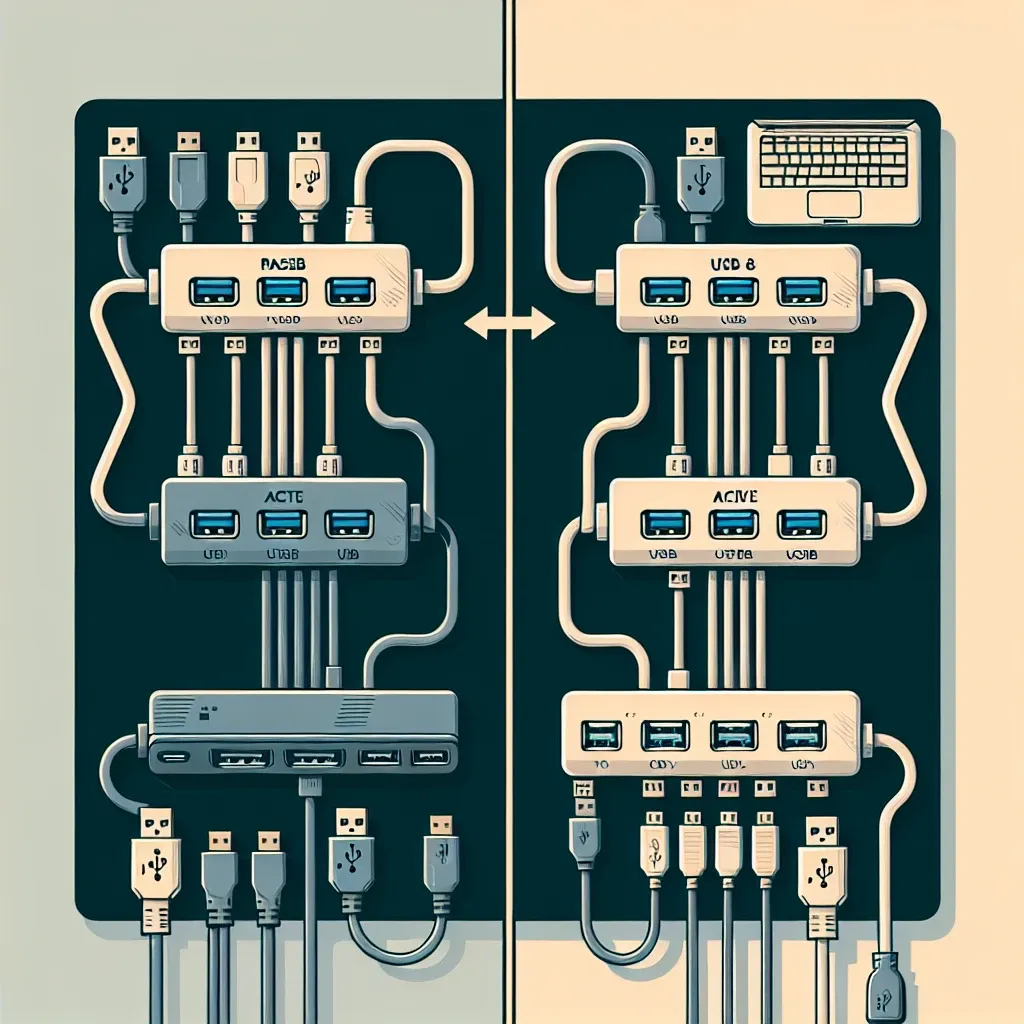In today’s digital age, USB devices have become an integral part of our daily lives. Whether it’s connecting printers, external hard drives, or other peripherals, USB technology allows us to quickly transfer data and maintain efficient connectivity. However, as the number of devices continues to grow, many users find themselves in need of additional USB ports, leading to the creation of USB splitters. In this article, we will explore the critical differences between active and passive USB splitters, helping you make an informed decision when purchasing one.
| Feature | Active USB Splitter | Passive USB Splitter |
|---|---|---|
| Power Supply | Requires external power source | Powered by the host device |
| Signal Strength | Maintains signal strength over long distances | Signal may degrade with longer cables |
| Data Transfer Rate | Higher data transfer rates possible | Potentially lower data transfer rates |
| Cost | Generally more expensive | Typically less expensive |
| Number of Ports | Can support many ports due to power supply | Limited by power from the host device |
Understanding USB Splitters
A USB splitter is a device that allows multiple USB devices to connect to a single USB port on a computer or host device. This is especially useful for laptops and devices with a limited number of USB ports. Splitters can come in two varieties: active and passive, each serving different needs.
What is a Passive USB Splitter?
A passive USB splitter simply allows users to extend a single USB connection to multiple devices without any additional power supply. It functions by splitting the data signals from one USB port into multiple outputs. The devices connected via a passive splitter share the available bus bandwidth of the computer, which may lead to performance issues if multiple high-demand devices are connected simultaneously.
Advantages of Passive USB Splitters
- Cost-Effective: Passive splitters are generally less expensive than their active counterparts, making them an attractive choice for budget-conscious consumers.
- Simplicity: With no Extra power sources or drivers needed, passive splitters are easy to set up and use.
- Portability: Their compact design makes passive splitters easy to carry and ideal for temporary arrangements.
Disadvantages of Passive USB Splitters
- Limited Distance: The signal may deteriorate if the distance between the splitter and the host device is too long.
- Power Limitations: Devices requiring more power than the host can provide may not function correctly.
- Data Transfer Rate: As more devices are connected, the effective data transfer rate may be significantly reduced.
What is an Active USB Splitter?
An active USB splitter is a more sophisticated device that includes a built-in power supply. This additional power allows it to maintain the signal strength and data integrity, even over longer distances. Active USB splitters can also support multiple high-speed USB devices simultaneously without degrading performance.
Advantages of Active USB Splitters
- Enhanced Performance: They typically provide stronger signals and higher data transfer rates than passive splitters.
- Greater Distance: Active splitters can maintain signal strength over longer cable lengths.
- Multiple Device Support: They can easily support several devices without impacting performance.
Disadvantages of Active USB Splitters
- Higher Cost: They are generally more expensive than passive splitters due to the additional technology and power supply.
- Size: They can be bulkier and less portable than passive options.
- Complexity: May require installation and setup, potentially deterring less tech-savvy users.
Key Differences Between Active and Passive USB Splitters
Performance
Active USB splitters typically outperform passive ones in terms of speed and reliability. The external power supply enables active splitters to maintain consistent performance, especially when multiple devices are in use.
Distance and Cable Length
For applications requiring longer cable runs, active USB splitters are the better choice. Passive splitters generally work best over shorter distances.
Cost Considerations
When purchasing a USB splitter, your budget will likely influence your decision. Passive splitters offer a low-cost solution, while active splitters may present a higher initial investment but deliver greater value in performance.
Choosing the Right USB Splitter for Your Needs
To determine whether an active or passive USB splitter is best suited to your needs, consider the following factors:
- Device Requirements: Do your devices require significant power? If so, an active splitter is recommended.
- Connectivity Needs: Are you connecting multiple devices simultaneously? An active splitter can handle this without degradation in performance.
- Distance: Will you be running cables over longer distances? Active splitters maintain signal quality better in this case.
- Budget: Determine whether you can invest in a more expensive active splitter or if a passive model will suffice.
Conclusion
In summary, both active and passive USB splitters have their advantages and disadvantages. Understanding the key differences between them will help you make an informed decision that best fits your connectivity needs. Whether you opt for a more affordable passive splitter or the superior performance of an active model, understanding your requirements is paramount to ensuring efficient and reliable operation of your USB devices.




